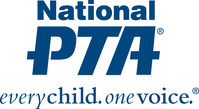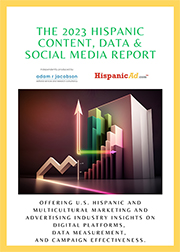Trends
As Marketers Experiment with Gen AI, New Applications Emerge

The emergence of generative AI is the defining feature of 2023 and 2024, in both a broad cultural context as well as within the world of data-driven marketing. Initially, like many other trends, marketers gravitated towards gen AI's most apparent initial applications — copywriting, research, and image generation. But as this year unfolded, a shift occurred. Marketers began to recognize and harness less obvious applications of gen AI, marking a significant evolution that we can expect to carry forward.
Spotlight: Uncovering agency use of generative AI [VIDEO]

WFA research reveals that only 3% of brands are fully aware of how their partners, including media and creative agencies, are using generative AI on their behalf. However, only 8% have developed policies to guide their partners’ use of the technology. As a result, certain brands are placing restrictions (and in some cases, total bans) on partners’ use of AI, reflecting mounting concerns around the reputational and legal risks associated with its use.
Parents’ Mindsets on the Internet and Digital Media

National PTA released the results of a national survey and listening sessions exploring parents' mindsets on the internet and digital media. The survey and listening sessions, which included parents and guardians with children in grades K-12 in public schools, were conducted by Edge Research. National PTA commissioned the research as part of the five-year anniversary of the association's PTA Connected initiative.
Among young U.S. workers without a college degree, men and women hold very different types of jobs

In the United States, young men and women who have a four-year college degree often work in some of the same professions. But there is considerably less professional overlap among young men and women without a college degree, according to a new Pew Research Center analysis of government data.
Beyond the Rainbow: Sustaining Authentic LGBTQ+ Engagement All Year Round

Every June, brands globally roll out the rainbow flags and proudly declare their support for the LGBTQ+ community during Pride Month. But as soon as the calendar flips to July, this enthusiasm often evaporates, leaving LGBTQ+ consumers feeling abandoned and exploited. This temporary engagement has led to growing resentment among queer consumers, who view these brands as mere Pride profiteers, exploiting the celebration to boost sales rather than offering genuine support.
Transforming Market Research: Gamification Strategies in Online Panels

In today's digital era, market research has significantly evolved, adopting innovative strategies to enhance participation and data quality. One of the most notable trends is gamification applied to online panels. Gamification involves integrating game elements, such as competitions, points, levels and rewards, into non-game activities to motivate and engage participants.
AI Is Great, But What Does It Mean I Have to Actually Do as a CMO?

You would need to have been on Mars to avoid the onslaught of news stories and startup launches in the AI space, but there remains a paucity of good perspective on the implications for marketing. Technology has become an extension of humans for many years starting with the personal computer evolving to the www and then the smartphone. AI is no different but arguably represents a more fundamental and tectonic shift as it is not purely behavioral, it is a new form of intelligence, meaning limitless applications.
Loyalty Marketing: How Much Fraud Is There?

Loyalty marketing is a big business and growing. But that growth also puts marketers at increased risk for fraud. Fraud from consumers, professional hackers, and even employees. ANA has begun work with Human to better understand the extent of that fraud as well as remedies to minimize it.
Agencies Should Always Act in the Clients’ Best Interest

Client/agency relationships were once predicated on the concept of a principal-agent relationship, where the agency had a fiduciary duty to act in their clients' best interest. When this concept was the accepted practice, most client/ agency agreements reinforced this expectation.
Legal Issues and Business Considerations When Using Generative AI in Digital Advertising [REPORT]

The IAB Legal Affairs Council Generative AI Working Group has published its white paper, Legal Issues and Business Considerations When Using Generative AI in Digital Advertising. This new, comprehensive whitepaper addresses the legal and business issues concerning the creation, training, and implementation of generative AI in digital advertising.
State of Spanish-Language Media 2024: Audio [REPORT]

This comprehensive study interviewed over 500 Spanish-language media consumers in the United States, ensuring gender and age demographics align with the 2020 Census data. Key insights from the report highlight significant trends in radio, podcast, and music streaming consumption among Spanish-language media audiences.
2023 Hispanic Content, Data & Social Report – Available for download FREE

HispanicAd offers its annual report on key Content usage strategies, along with the importance of using Data strategies to engage the US Hispanic Consumer. Social Marketing strategies are reviewed for their performance value.
Will Multicultural Gen Z Revitalize Hispanic Radio?

At the recent Hispanic Radio Conference, I participated in a panel discussion where industry experts and enthusiasts gathered to ponder the future of Hispanic radio. The enthusiasm in the room was infectious, underscoring a collective belief that the industry is on the brink of a significant transformation. The key takeaway was clear: to capture the hearts and minds of Gen Z, Hispanic radio must innovate while staying true to its cultural roots. By Mario Carrasco
Radio and Trust Go Hand in Hand

Katz surveyed 1,000 adults across the country to pose a simple question about a not so simple issue - media trust. Respondents were asked, "How trustworthy do you find the following sources of information?" with regards to radio, television, newspapers, magazines, and social media. Our simple probe into the minds of consumers turned up some encouraging news for the radio industry and advertisers.
The voice of our industry was heard in Cannes.

Today, HispanicAd.com is proud to dedicate this edition to the efforts of our industry at the Cannes Festival. It was a coordinated effort to reach the leaders of the ad and marketing industry and members of our agencies and trade organizations literally descended on the beautiful beach town in France. The Hispanic Marketing Council (HMC) launched its campaign to call attention of Corporate America. AIMM had a number of successful meetings and "charlas" and We Are All Humans had a presence as well. We are proud of these efforts. And we need to continue! Following is our recap.
AIMM highlights the importance of Hispanics & Multicultural Consumers at Cannes

As we reflect on the entirety of our journey at this year’s Cannes Lions International Festival of Creativity, we are filled with gratitude and inspiration. Thursday, Day 4 of our week of content and Belonging Lounges, was marked by meaningful conversations, innovative ideas, and a collective commitment to pushing the boundaries of creativity and inclusion.
New Estimates Highlight Differences in Growth Between the U.S. Hispanic and Non-Hispanic Populations

Between 2022 and 2023, the Hispanic population accounted for just under 71% of the overall growth of the United States population, driven primarily by Hispanic births, according to newly released Vintage 2023 Population Estimates from the U.S. Census Bureau. Hispanics of any race grew to just over 65 million, an increase of 1.16 million (1.8%) from the prior year. This growth significantly contributed to the nation's total population gain of 1.64 million in 2023.
More Than 50% of Organizations Have an AI Leader, but 88% Indicate Their AI Leader Does Not Have the Title of Chief AI Officer

A recent Gartner, Inc. poll of more than 1,800 executive leaders, revealed that 55% of organizations have an AI board. The poll also indicated 54% of organizations have a head of AI or an AI leader that orchestrates activities.
Navigating the Shift: Adapting to a Potential TikTok Ban

As the founder and president of RiseOpp, a leading Fractional CMO agency in San Francisco, I've observed firsthand how rapidly the digital landscape can shift, presenting marketers with both challenges and opportunities. With the looming possibility of a TikTok ban in the United States, businesses heavily reliant on this platform must swiftly and strategically pivot to maintain their competitive edge. As marketers, we need robust strategies for adapting digital marketing efforts to thrive, even in TikTok's potential absence. Let's jump in.
Consumers Battle Fatigue Over Food Inflation

When it comes to their stamina for paying historically high food prices, U.S. consumers are gassed. Having borne the brunt of a protracted post-pandemic inflation runup with extraordinary resilience, Americans have finally hit the wall.


























